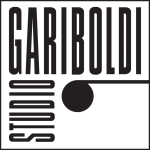In 1919 he graduated in mechanical engineering. In 1923 he enrolled in Clinton Balmer’s evening classes, and later in the Art Students League in New York. One of his teachers was John Sloan, who influenced his oil paintings, and Boardman Robinson, who influenced his linear line drawing, a fundamental stylistic element in Calder’s work.
In 1926, in Paris, he constructed self-propelled objects, often inspired by circus life, and wire sculptures. In 1931 he got in close contact with Jean Miró and was impressed by the research of Mondrian and Arp. He joined the Abstraction-Création group and developed his first abstract constructions. In 1932 he showed his first mobiles, sheets of various colours in aerial balance, which a suspension system assembled of metal wires made to move at the slightest movement of air. Alongside the mobiles, he built small stable silhouettes and, between 1940 and 1943, he created the Constellations and Towers, wooden objects connected by steel wires. After 1950 Calder added the stabiles to the aerial lightness of the mobiles, with their opaque bodies and large arches.
The stabiles with the greatest impact were Spiral for the UNESCO Palace in Paris in 1958, The Four Elements, in Stockholm, in 1961, Teodelapio, for Spoleto, in 1962 and The Red Sun, for the 1968 Olympic Games in Mexico.
Gallery
Question: Léger once called you a realist. How do you feel about this?
Calder: Yes, I think I am a realist.
Question: Why?
Calder: Because I make what I see. It’s only the problem of seeing it. If you can imagine a thing, conjure it up in space – then you can make it, and tout de suite you’re a realist. The universe is real but you can’t see it. You have to imagine it. Once you imagine it, you can be realistic about reproducing it.
(from The Artist’s Voice: Talks with Seventeen Artists, New York, 1962)



